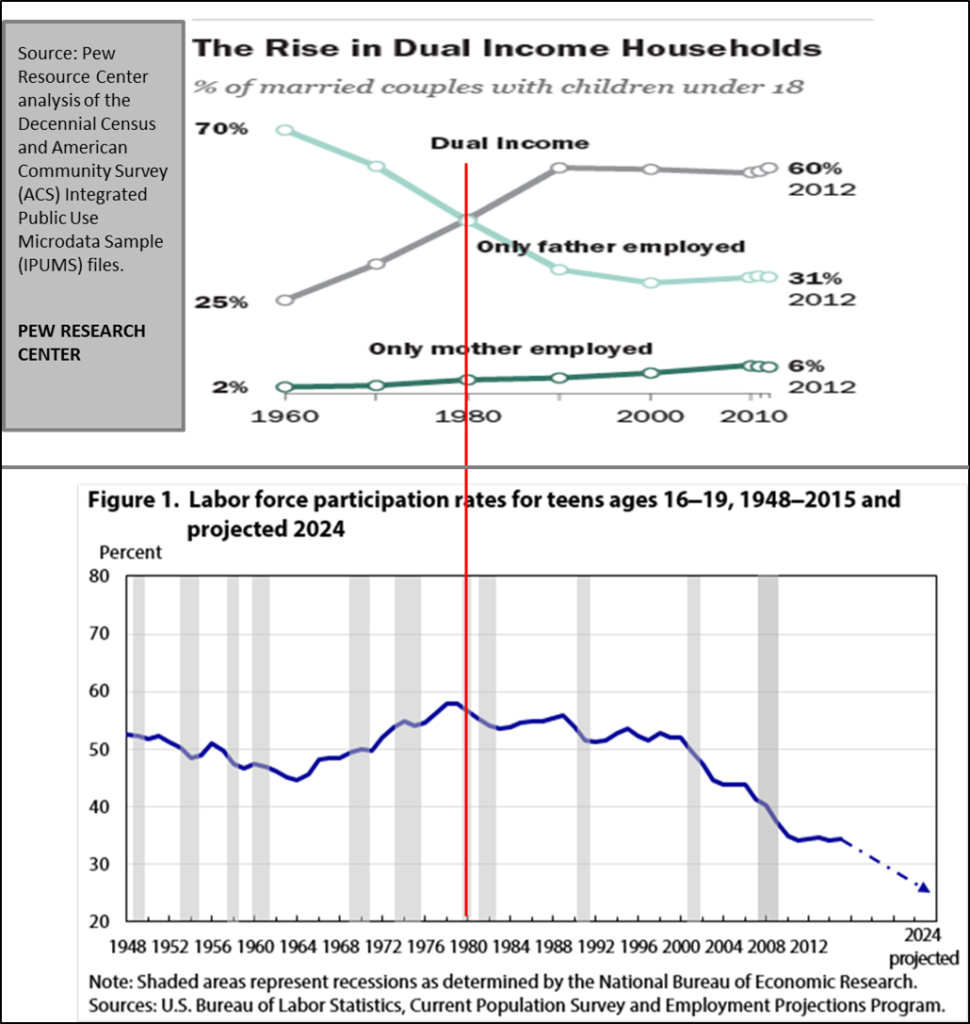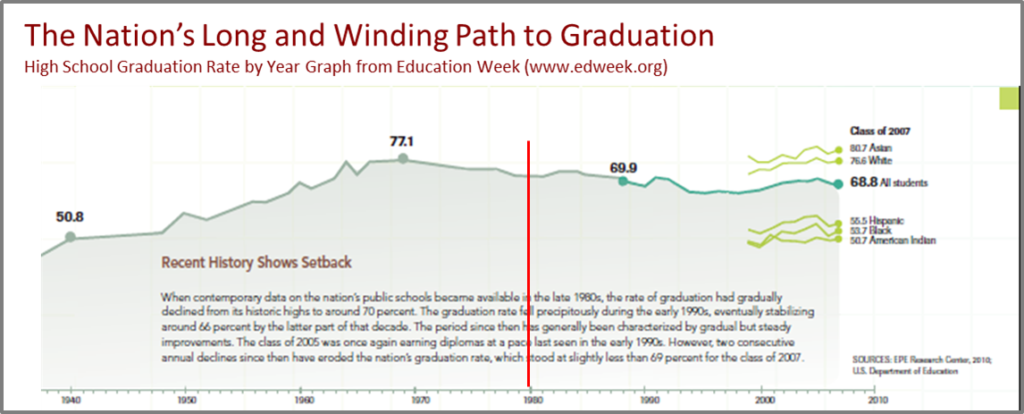Today’s Lesson: Youth Employment Recruiting and Compliance

With Memorial Day having marked the unofficial start of summer, many employers are hoping to benefit from an influx in the availability of minor employees at the close of the school year to help fill seasonal jobs and/or entry-level roles for which it has been difficult to find available candidates due to current labor shortages. In the past, youth employees were a viable source for many employers to supplement their workforce particularly in the retail, hospitality (lodging and food service) and healthcare/social assistance industries throughout the school year and summers, but many companies are noting a significant lack in youth applicants which has been on a downward trend for some time now.
Decline in Youth Labor Workforce
In the February 2017 edition of Monthly Labor Review, the Bureau of Labor Statistics published an article titled, Teen labor force participation before and after the Great Recession and beyond which included Figure 1. Labor force participation rates for teens ages 16-19, 1948-2015 and projected 2024 (pictured below), the report focused on the decrease in youth employment and also offered speculation on the cause(s). One common belief often drawn from student surveys is that fewer minors seek employment due to a greater focus on schooling and their studies. However, Editorial Projects in Education compiled and shared its graphical display of US graduation rates named The Nation’s Long and Winding Path to Graduation for its Education Week publication (see below), which contains data that could actually be somewhat contradictory to this generally accepted assumption.
Many recent headlines have touted the gains made in graduation rates, but they typically only contain data dating back to the early 2000s. When you look at a broader scope of historical data as they did for the Education Week graph, US high school graduation rates grew to the highest level (around 77.1%) in the late 1970s and actually declined from that point. More recent initiatives have helped those numbers to rise again, but the theory that more kids are staying in school when compared with the data on the reduction in youth workers, which really began to see a significant decline in the 1980s does not appear to have a total correlation.
One factor that does seem to have a greater connection with the drop off in minors entering the workforce is the rise in dual income households. As displayed in The Rise in Dual Income Households graph from the Pew Research Center (below), one could conclude that when both parents entered the workforce as the need for dual incomes increased, their children no longer were entering the workforce. This would make sense, particularly given that if most households have two cars and both are being used by parents to get to and from work then potential student workers, particularly those without drivers licenses, are left without adequate transportation. In a study funded by HopSkipDrive, which is a ride service geared to assist parents with transporting kids to their extracurricular activities. they found that many parents are overwhelmed and stressed by having to not only work full time, but then play taxi service in order get kids to/from school and deliver kids to their many after-school functions. Add to this, having to bring a child to or pick them up from a job that only pays minimum wage and it is very likely parents may be opting to not have their kids work since the economics of their free-time, plus gas does not yield a enough ROI to make it worth while.

Recruiting Ideas
So if, in fact, parents are too tired to deal with adding work chauffeur to their long list of duties and/or if school studies are really contributing to fewer available workers, what are some things you might do in order to tap into a potential source for needed candidates?
Bring Your Child to Work Program
Instead of just participating in the annual Bring Your Child to Work days, why not consider encouraging parents to bring their older children to work with them to help in filling more part-time or entry-level roles. Perhaps in an office you can create summer/vacation or part-time afternoon positions that can help alleviate mundane tasks for existing employees such as filing paperwork, data entry or other administrative type roles. Where parents are already driving to work or home from there, being able to carpool with their child would not add any additional time and stops to their commute. You could schedule a brief break for those parents whose children would be interested in this type of work to have a break to pick up their child from school to have them also help out throughout the school year.
Work Experience and Career Exploration Programs (WECEP)
Partnering with a local public school to help provide educational opportunities to students interested in entering a skilled trade is an excellent way to help supplement your current workforce and potentially train your future employees. The school may also be able to provide viable transportation for your student workers. These programs allow 14 and 15 year old students to work up to 23 hours per week during school hours. Operation of WECEP is granted by US Department of Labor to the State Department of Education. Click here to learn more about WECEP. In New Hampshire, these programs are referred to as Extended Learning Opportunities (ELOs). To learn more about how to implement an ELO, download the Creating Approved Work-Based Learning Experiences guide approved by the New Hampshire Department of Labor and New Hampshire Department of Education.
Transportation Services
If you do not have the option of having parents in your workforce or the opportunity to work with a school to create a WECEP whereby someone may be able to assist with getting youth workers to and from work, you might look into either providing your own transportation or hiring a service to help. If you are opening a new business and are in a city with adequate public transportation, proximity to public transportation hubs should be high on your list of site selection criteria. Finding a way to get to work could be a barrier to a minor’s ability to consistently make it to the workplace, so you may need to get creative in your compensation and benefit offerings to address this issue and give you a competitive edge over other youth employers.
Know the Rules and Regulations
Assuming you are able to recruit youth workers, you then face the often monumental task of maintaining compliance with existing youth labor laws and also staying apprised of prospective changes and how they affect your employee schedules, payroll and safety and other processes and procedures. Violation of Federal Labor Laws can result in steep fines up to a $10,000 civil penalty per violation and for violations of NH Youth Labor Laws, may result a misdemeanor offense against the employer as well us up to $2,500 in civil penalties for each violation.
In New Hampshire, an effort is being made via Senate Bill 318 to ease the current youth labor laws and put restrictions on when the NH Department of Labor can inspect a facility. Youth employment infractions always rank high on the Top 10 Labor Law Violations list released each year by the NH DOL and can quickly rack up significant penalties for offending employers. So what are the current laws governing the employment of youths in New Hampshire?
Employment of a 14 or 15 year old
New Hampshire law sets the minimum work age at 12; however, Federal Law stipulates a minimum age at 14 and employers are required to follow the stricter regulation – in this case Federal. There are some exceptions permitting youths under 14 to work as farm laborers, perform casual work (no more than 3 days for one employer in a calendar year), do newspaper delivery (door-to-door) and/or work in a family business (for parents, grandparents or legal guardians). Otherwise, in order to hire a 14 or 15 year old worker, all other employers must follow specific steps to legally hire and employ a minor employee under 16.
Steps for Hiring:
- Complete the interview process for the employee
- Upon identifying an ideal candidate who is 14 or 15, fill out an Employer’s Request for Child Labor form and give it to the applicant.
- The applicant will then need to take the form to their local school or school superintendent to request they complete a New Hampshire Youth Employment Certificate (Note: In June of 2016, Governor Hassan signed HB 1301 into law which permits parents to sign New Hampshire Youth Employment Certificates for children under 16).
- If permitting the youth to work is deemed acceptable, the certificate is issued along with a copy of New Hampshire’s Youth Employment Labor Laws, which is returned to the employer and must be maintained on file. A duplicate copy is sent to the Department of Labor so that they have record of and ensure the child is working in a safe environment.
There are certain restrictions set on the hours that a 14 or 15 year old may work and the types of work that they can perform:
Hour Restrictions
- 14 or 15 year olds may not be employed during school hours except for work performed as part of an approved Work Experience and Career Exploration Program (WECEP).
- They may not work prior to 7am or after 7pm during the school year, with and extension granted until 9pm from June 1st until Labor Day.
- Cannot be employed more than 3 hours on school days and no more than 8 hours on non-school days.
- During school calendar weeks, 14 or 15 year old employees may work no more than 18 hours total (23 hours as part of a WECEP) in a week and during vacation or summer weeks no more than 40 hours.
Note: A work week is defined as Sunday through Saturday.
Some Examples of Prohibited Work
- No youth shall be employed or permitted to work in any hazardous occupation, except in an apprenticeship, vocational rehabilitation, or training program approved by the commissioner.
- No youth under 16 years of age shall be employed or permitted to work in a dangerous area in manufacturing, construction, and mining and quarrying occupations, or in woods and logging.
- Work in connection with maintenance or repair of the establishment, machines or equipment.
- Work requiring use of dangerous machinery such as operating, setting up, adjusting, cleaning, oiling or repairing power-driven food slicers and grinders, food choppers and cutters, and bakery-type mixers.
- Processing operations such as filleting fish, dressing poultry, cracking nuts or laundering performed by commercial launderers or dry cleaners.
- Any work involving warehousing or storage.
- Outside window washing or any work involving use of ladders, scaffolding or their substitutes.
For a complete list, please click here.
Employment of a 16 or 17 year old
While restrictions for 16 and 17 year old workers are a little more relaxed than those of even younger employees, there are still some vital requirements employers must adhere to in order to avoid potential penalties and criminal charges.
Steps for Hiring
- Complete the hiring process for the employee.
- Once an ideal candidate is identified, obtain written permission from the parent for the child to work in the way of a Parental Permission Form as part of your employee onboarding and maintain that on file as part of your employee records.
Hour Restrictions (Enrolled in School)
- No more than 6 consecutive days or more than 30 hours in a school calendar work week.
- No more than 6 consecutive days or more than 48 hours in a school vacation week or during the summer weeks (June 1st through Labor Day). An exception to this rule is granted for 16 or 17 year old workers employed and residing at summer camps for minors.
Hour Restrictions (Not Enrolled in School)
- No more than 10 hours per day or 48 hours per week in manual or mechanical labor in manufacturing.
- Not more thn 10.25 hours per day or 54 hours per week in manual or mechanical labor in any other industry.
- No more than 8 hours in a 24-hour period or 48 hours total per week if working nights.
Prohibited Occupations for ALL Minors Under 18
- Manufacturing and storing explosives.
- Motor vehicle driving and outside helper.
- Coal mining.
- Logging and Sawmilling.
- Power-driven wood-working machines.
- Exposure to radioactive substances.
- Power-driven hoisting aparatus.
- Power-driven metal forming, punching and shearing machines.
- Mining, other than coal mining.
- Slaughtering or meat packing, processing or rendering.
- Power-driven bakery machines.
- Power-driven paper-products machines.
- Manufacturing brick, tile and kindred products.
- Power-driven circular saws, band saws and guillotine shears.
- Wreaking, demolition and ship breaking operations.
- Roofing operations.
- Excavation operations.
Employment of an 18 year old
Once a child turns 18, regardless of whether or not he or she is enrolled in school, that individual is no longer considered a youth worker and thus is no longer subject to the aforementioned restrictions. Instead, employers would need to treat them as they do other workers and comply with FLSA, DOL, OSHA and/or other compliance requirements applicable to their workforce.
Maintaining Compliance
Even when you know the rules and can cite them backwards and forwards, employers can still be subject to potential penalties when mistakes are made by their managers or employees. An employee clocking off 5 minutes late can trigger penalties if they have exceeded the end-of-shift time work requirement or end up exceeding the permitted hours for that day or week. This problem can be exacerbated by employees swapping shifts without management knowledge, particularly if the youth working picking up a shift is close to has already hit any of the legal time constraint thresholds.avoid
So what can you do to avoid potential traps?
With an automated workforce solution like CheckmateHCM, you can easily manage youth employees in a consistent and compliant manner to avoid potential fines and legal ramifications. Our solution includes capabilities such as:
- A powerful Workforce Scheduler that helps build shifts based on employee availability, hour restrictions and shift worker ratios.
- The ability to receive alerts in advance of set hour limitations notifying managers when an employee needs to clock off.
- Oversight and approval rights with an audit trail to administer shift swap requests.
- Accessibility to time tracking and other records from any connected device – desktop, tablet or mobile or via time clocks (perfect for WECEPs).
- Online Recruiting and Applicant Tracking for job posting, applicant submissions and interview scheduling
- Automated onboarding to collect required employment paperwork including Youth Employment Certificates, Parental Permission Forms as well as W-4s, I-9s and other standard forms)


